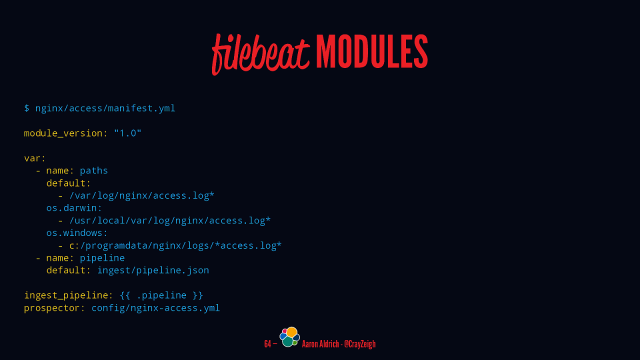

- Filebeats nginx access log install#
- Filebeats nginx access log update#
- Filebeats nginx access log full#
As a result, you may decide that you want to disable it. We have successfully installed and configured filebeat and for example, We have configured filebeat to send Nginx access Logs to logstash. To check the logs of the filebeat, sudo tail -f /var/log/filebeat/filebeat. To check the status of the filebeat, sudo systemctl status filebeat.

Filebeat configuration which solves the problem via forwarding logs directly to Elasticsearch could be as simple as: filebeat: prospectors: - paths: - /var/log/apps/.log inputtype: log output: elasticsearch: hosts: 'localhost:9200' It’ll work. sudo systemctl start filebeat sudo systemctl enable filebeat. However, this log can take up disk space and increase the number of disk writes that your server is performing. It monitors log files and can forward them directly to Elasticsearch for indexing. Make sure that youve correctly installed and configured your YAML config file. The access log contains helpful information about the HTTP requests that were received by your web server.
Filebeats nginx access log install#
Install Filebeat on your source Amazon Elastic Compute Cloud (Amazon EC2) instance. For the configuration file, use the following code: filebeat.modules: - module: nginx access: var.paths: 'C:ngnixaccess.log' For the command line.

Filebeat obtains the access log configuration of nginx The server that generates the nginx log is the producer server configuration: Take as an example.
Filebeats nginx access log update#
Update your Filebeat, Logstash, and OpenSearch Service configurations. Filebeat obtains the access log configuration of nginx, Programmer All. By default, the access log is globally enabled in the http directive inside the main Nginx configuration file. The access log can be enabled either in http, server, or location directives block.
Filebeats nginx access log full#
See also the doc about NGINX logs from NGINX Admin guide.I am using nginx module for filebeats to send log data to elasticsearch. Set up your security ports (such as port 443) to forward logs to Amazon OpenSearch Service. Where logfile is the full path to the log file, and logformat is the format used by the log file.

To enable debug logging, set the level to debug and also set the -nginx-debug command-line argument, so that NGINX is started with the debug binary nginx-debug. It is configured via the error-log-level ConfigMap key. Keep in mind that this method could require some extra CPU if you have a lot of logs to process. Another useful method is to choose your index based on the log content which is coming. stream-log-format for TCP, UDP, and TLS Passthrough traffic.Īdditionally, you can disable access logging with the access-log-off ConfigMap key.Įrror log, where NGINX writes information about encountered issues of different severity levels. Index names based on the log lines being read.The access log is configured via the logging-related ConfigMap keys: NGINX LogsĪccess log, where NGINX writes information about client requests in the access log right after the request is processed. See also the doc about Ingress Controller command-line arguments. It was created because Logstash requires a JVM and tends to consume a lot of resources. Log patterns could be found on the controllers docs. FileBeat is used as a replacement for Logstash. ingresscontroller fileset parses access logs created by ingress-nginx controller. FileBeat then reads those files and transfer the logs into ElasticSearch. A domain name or IP address can be specified with a port to override the default port, 514. Syslog messages can be sent to a server which can be a domain name, an IP address, or a UNIX-domain socket path. The value 3 is useful for troubleshooting: you will be able to see how the Ingress Controller gets updates from the Kubernetes API, generates NGINX configuration and reloads NGINX. The setup works as shown in the following diagram: Docker writes the container logs in files. In NGINX, logging to syslog is configured with the syslog: prefix in errorlog and accesslog directives. The default value is 1, for which the minimum amount of logs is reported. The Ingress Controller process logs are configured through the -v command-line argument of the Ingress Controller, which sets the log verbosity level.


 0 kommentar(er)
0 kommentar(er)
